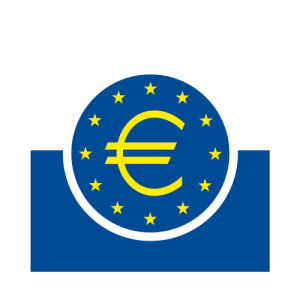
While the consensus expectations for the outcome of today's meeting of the Governing Council of the European Central Bank were quite unanimous, not many forecasters expected what was to follow in terms of additional monetary policy easing measures after the main refinancing rate has been cut to 0.15% and the central bank's deposit facility rate has been put into negative territory at -0.1% bp.
As the euro started tanking across the board, the initial announcement set curious eyes towards the press conference, during which the President of the ECB, Mario Draghi, set to unveil the additional unconventional measures the Euro Area monetary policy vigilante was ready to unveil.
And so it happened - as Mr. Draghi started to unveil those, volatility in the currency markets has markedly picked up. Aside from reiterating that rates will stay at present levels for the foreseeable future, the ECB announced that it is extending the full allotment of repo operations and it is suspending sterilization of the previous bond purchases conducted under the Securities Markets Program (SMP), which involved purchasing government bonds on the interbank market.
The biggest surprise came from the announcement of a package targeting longer-term loans linked to new lending totaling €400 billion. According to the President of the ECB, Mario Draghi, policy measures are designed to “support bank lending to households and non-financial corporations, excluding loans to households for house purchases. Provisions will aim to ensure that the funds support the real economy.”
The central bank is pioneering two aspects of monetary policy in a single day - firstly, they are the first major central bank to introduce a negative deposit rate, and secondly, they appear to be cautions about asset bubbles, namely in the housing sector. Hence they have specifically excluded the housing market from the equation.
Effectively the ECB is targeting extensive monetary base expansion (totaling €400 bln) by providing commercial banks with cheap money to be relayed to the real economy participants who are seeking credit.
The euro currency has reacted swiftly - dropping sharply by more than a cent and subsequently recovering the whole move to squeeze out short-term day traders and end up currently trading pretty much where it was at yesterday’s close around 1.36.
As Forex Magnates has stated in the beginning of April, the European Central Bank has been the most likely candidate to unlock FX Volatility , and after last month’s hint of incoming action, today we finally got what many traders have been waiting for - a major shift in monetary policy direction from one of the major central banks.
The ECB has stated that it will “closely monitor the possible repercussions of geopolitical risks and Exchange rate developments.” In the Q&A session during his press conference, Mr. Draghi expressed the Governing Council’s worries about the high levels of the exchange rate which result in lower inflation numbers across the Euro Area. He stated, “The governing council is committed to using unconventional measures if there is too long a period of too low inflation.”
Translation: More ECB action is warranted if inflation rates stay low and the amount of loans to households and the non-financial sector of the economy remain stagnant. Of course, pointing out to today's substantial monetary policy course change, the euro crosses across the board are very likely to see more action in the coming weeks and months.
Despite not literally saying it, the President of the ECB has hinted that the extraordinary euro strength, which has been observed in recent months, is an unwelcome development. If someone thought that we are not likely to hear the term “currency wars” in the near future… well, that somebody is wrong, we have just started a couple of years back.
As the real economy continues to struggle despite asset prices rising across major developed markets for a 5th year running, the only viable policy tool that major developed economies have is monetary policy.

















